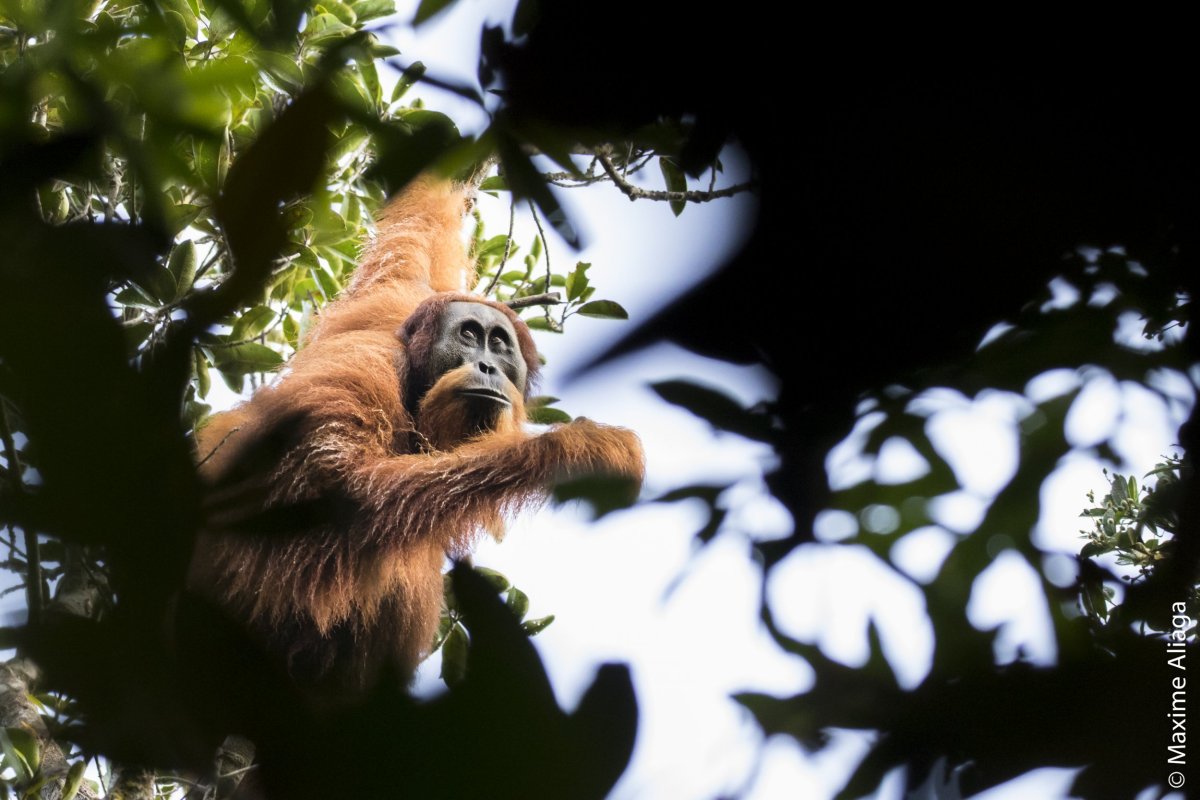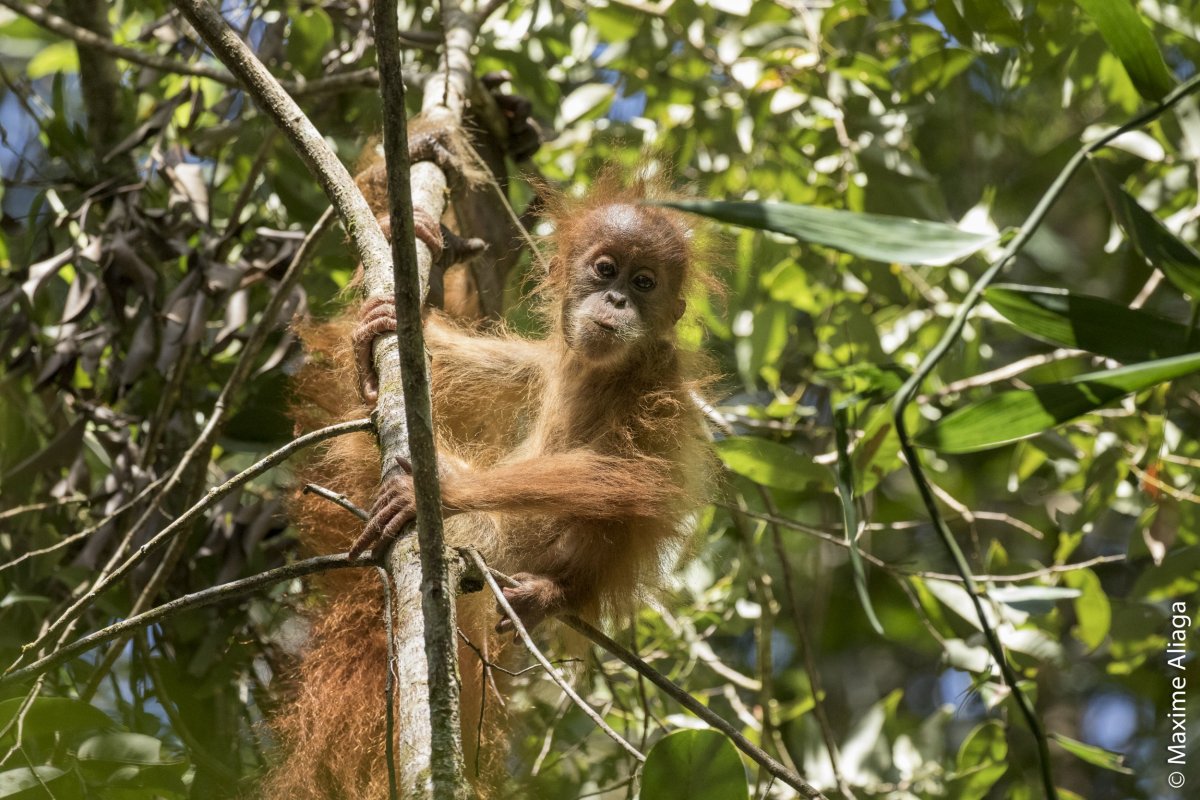
A brand-new species of orangutan exists, scientists have determined, based on their analysis of a skull and a population of 800 animals living deep in the Indonesian forest.
Before 1997, this isolated population of orangutans in a remote jungle was little more than a myth. Then people confirmed that the animals were living there, but they suspected that it was a group of Sumatran orangutans, which are already known to science. In 2013, scientists received a mysterious skull belonging to one of the individuals. After studying the skull and the living animals, researchers realized that this creature was a previously unknown species.
The Tapanuli orangutan, Pongo tapanuliensis, lives in the Batang Toru area in North Sumatra, Indonesia, south of and isolated from Sumatran orangutans, Pongo abelii. It is genetically, physically, and even behaviorally different than the other two species of orangutans.

Until the Tapanuli orangutan was described, there were only six official species of nonhuman great ape: chimpanzees, two species of gorillas, bonobos, and two species of orangutan. The new Tapanuli species is more genetically distinct from the Bornean and Sumatran orangutan than they are from each other. The Tapanuli orangutan likely split off from the others more than three million years ago.
At only 800 known individuals, this species is the most endangered group of great apes in the world. The designation of this group as distinct from Sumatran orangutans means that they are a very small population of their own, and also that there are 800 fewer Sumatran orangutans than before.

All three species of orangutan face dire threats to their populations at the hands of humans. Hunting, habitat destruction, and a proposed hydroelectric dam all threaten their vulnerable populations. The dam would flood major areas of their habitat, and as humans encounter these animals more often, they become vulnerable to being captured as meat and as pets. The paper suggests that a mortality rate of even 1 percent per year could drive this newly identified orangutan species to extinction. It's known that, at least among Sumatran orangutans, females give birth to only one child every eight or nine years, so their ability to rebound is very low.
It's especially surprising that scientists were able to find this species of ape because apes are among the most well-studied animals on the planet. After 200 cumulative years of research on great apes, scientists had somehow missed this entire species.
According to the press release, the researchers hope to work with conservation organizations and the Indonesian government to help protect this critically endangered species. The research was published in the journal Current Biology.
Uncommon Knowledge
Newsweek is committed to challenging conventional wisdom and finding connections in the search for common ground.
Newsweek is committed to challenging conventional wisdom and finding connections in the search for common ground.
About the writer
Kristin is a science journalist in New York who has lived in DC, Boston, LA, and the SF Bay Area. ... Read more
To read how Newsweek uses AI as a newsroom tool, Click here.








